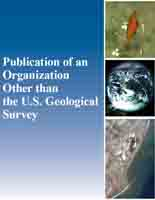Correlation of ash-flow tuffs
Links
- More information: Publisher Index Page (via DOI)
- Download citation as: RIS | Dublin Core
Abstract
Discrimination and correlation of ash-flow sheets is important in structurally complex, long-lived volcanic fields where such sheets provide the best keys to the regional stratigraphic framework. Three-dimensional complexities resulting from pulsatory eruptions, sectorial emplacement, mechanical sorting during outflow, thermal and compositional zoning of magmas, the physical zoning of cooling units, and structural and erosional disruption can make such correlation and discrimination difficult. When lithologic, magnetic, petrographic, chemical, and isotopic criteria for correlating ash-flow sheets are critically evaluated, many problems and pitfalls can be identified. Distinctive phenocrysts, pumice clasts, and lithic fragments are among the more reliable criteria, as are high-precision K-Ar ages and thermal remanent magnetization (TRM) directions in unaltered welded tuff. Chemical correlation methods should rely principally upon welded or nonwelded pumice blocks, not upon the ash-flow matrix, which is subject to fractionation, mixing, and contamination during emplacement. Compositional zoning of most large sheets requires that many samples be analyzed before phenocryst, glass, or whole-rock chemical trends can be used confidently as correlation criteria.
| Publication type | Article |
|---|---|
| Publication Subtype | Journal Article |
| Title | Correlation of ash-flow tuffs |
| Series title | Geological Society of America Bulletin |
| DOI | 10.1130/0016-7606(1985)96<968:COAT>2.0.CO;2 |
| Volume | 96 |
| Issue | 7 |
| Year Published | 1985 |
| Language | English |
| Publisher | Geological Society of America |
| Description | 7 p. |
| First page | 968 |
| Last page | 974 |
| Google Analytic Metrics | Metrics page |


